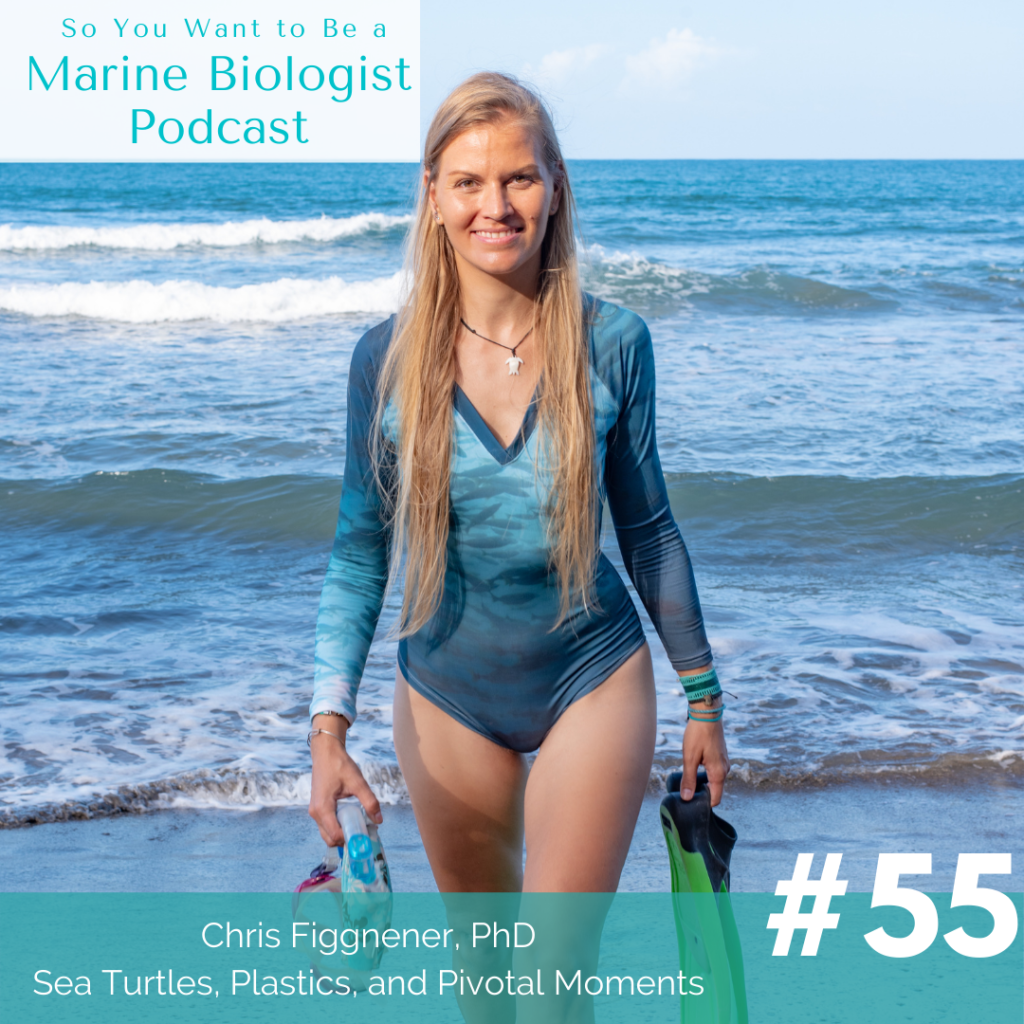Dr. Chris Figgener is the director of science and education at the Footprint Foundation and Costa Rican Alliance for Sea Turtle Conservation & Science (COASTS), founder of Nāmaka Conservation Science, and the researcher that filmed the sea turtle straw video. In today’s episode we chat about what brought Chris from Germany to study sea turtles in Costa Rica, why she prefers sea turtle research over whale research, and how one seemingly small action can create an entire movement.
Connect with Chris: Instagram|Facebook|Twitter|website|Milkywire
Additional ways to connect
Milkywire
COASTS: IG|FB|Twitter
Footprint Foundation: IG|FB|Twitter
Quick Links
Hans Hass
Tuebingen University
Anai organization Costa Rica
Gandoca
Eastern Pacific Leatherback
Sea turtle excavations
Synchronised nesting- Arribada
Texas A&M University
Stable isotope technique to track sea turtles
Mendelian genetics
CITES
PCR technique
Sea turtle straw removal video
Footprint Foundation
Pledge 2050
DIY natural cleaning product recipes
Namaka Conservation Science
Milkywire for Namaka Conservation Science
Show Notes
3:45 – Chris began pursuing her interest in marine biology by volunteering at an aquarium.
5:15 – An exchange year in the United States allowed Chris to hone the english language and be able to understand biology literature (most commonly published in English)
9:45 – Chris explains that she decided to stay landlocked for her Master’s degree and study tropical and animal ecology because she wasn’t quite as interested in every aspect of marine biology. For example, physical oceanography.
14:00- Chris ended up writing her thesis while also working in Costa Rica after having interned with that same organization earlier on.
17:00- Though originally interested in humpback whales, Chris ended up preferring sea turtle work in the end, because cetacean work required a lot of boat work with all of the cool stuff happening underwater. She missed walking on the beach and being able to handle the animal
23:15 Arriabata or synchronised nesting landing can result in half a million sea turtles on the beach at the same time.
26:40 Chris talks about some of the frustrations/challenges that go along with being a female biologist working in the field
30:23 To enhance hatching success, Chris used more oxygenated sand (the closer to the ocean, the more tidal ventilation, the more oxygen. She determined that this method was effective by establishing the treated site and a control site and comparing each’s hatching success.
35:13- Chris talks why publishing can be a pretty painful process; not being a native speaker made it even more difficult in the beginning of her career
37:00 Land plants and marine plants have different levels of carbon. Nitrogen levels give you an idea of where in food chain an individual is eating. Using stable isotopes Chris researches the diet of sea turtles throughout their life. Sea turtles are mostly omnivorous in the open ocean and herbivorous when they return to the coast. There will be a sharp decline in the nitrogen when they’ve consumed coastal vegetation.
46:50 Chris is currently in the process of setting up an experiment to figure out how many partners a female sea turtle had based on the genetics of her babies in a single nest.
53:00 Chris discusses creating the famous video of the straw in a sea turtle’s nostril.
57:00 That video enabled her to really begin talking to the whole world about the harm of plastic and sparked the end plastic movement.
1:08 Looking at how turtles swim through the ocean, if they’re moving in and out of international waters to see where important migration zones are then lobby for protected areas
1:11 If she has unlimited money to spend on a project, Chris would want to put as many women as possible in the field to do cool projects by covering expenses. Especially in Costa Rica she wants to foster more encouragement for female scientists.
